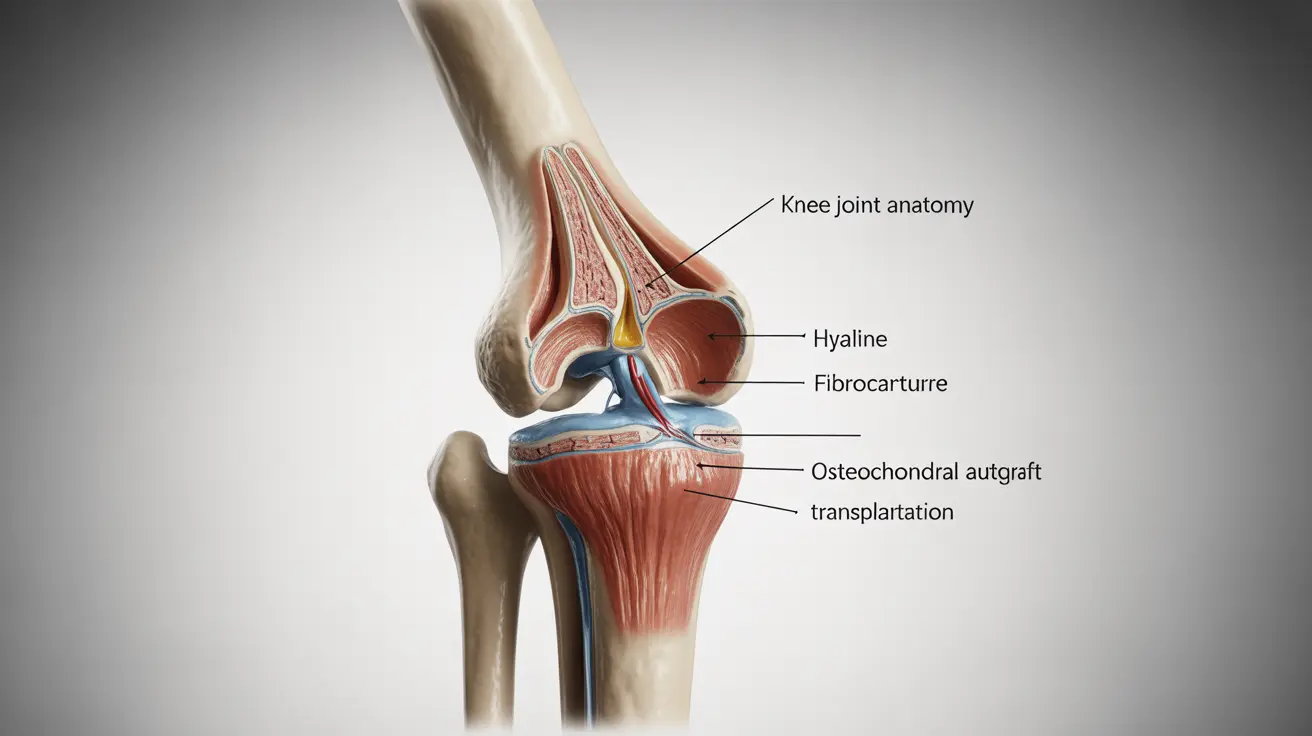Early diagnosis is crucial as it can provide access to treatment options that may help alleviate symptoms and improve quality of life. It also allows patients and families to plan for the future, including care needs, living arrangements, and handling legal matters.
Understanding Alzheimer's Disease
Alzheimer's Disease (AD) is a degenerative brain syndrome characterized by a decline in memory, language, problem-solving, and other cognitive skills that affect a person's ability to perform everyday activities. Distinct from the mild forgetfulness often seen in aging, AD involves widespread brain damage that starts in the hippocampus, the area responsible for forming memories, before spreading, leading to severe cognitive and behavioral impairments.
Key characteristics and stages of AD include:
Early-Stage Alzheimer's (Mild):
- Memory lapses, such as forgetting familiar words or the location of everyday items.
- Challenges in planning or solving problems.
- Difficulty completing familiar tasks at home or work.
Middle-Stage Alzheimer's (Moderate):
- Confusion with time or place.
- Trouble handling money and paying bills.
- Changes in mood and personality, including withdrawal from social situations.
Late-Stage Alzheimer's (Severe):
- Loss of awareness of recent experiences and surroundings.
- Difficulty communicating.
- Increasing need for personal care.
Understanding these stages helps in planning for care and intervention. Unlike normal aging, where occasional forgetfulness is common, AD's memory loss is persistent and worsens over time, significantly impairing the ability to function independently.
Recognizing the Symptoms of Alzheimer's Disease
Recognizing the early signs and symptoms of Alzheimer's Disease (AD) can lead to timely intervention:
Early Signs and Symptoms:
- Difficulty remembering newly learned information.
- Challenges in planning or solving problems.
- Misplacing belongings and inability to retrace steps.
- Changes in mood, personality, or withdrawal from social activities.
- As AD progresses, symptoms become more pronounced and disruptive:
Progression of Symptoms:
- Increased memory loss and confusion.
- Problems recognizing family and friends.
- Difficulty speaking, swallowing, and walking.
- Repetitive conversations or movements.
Behavioral and psychological symptoms of dementia (BPSD) are also common:
- Behavioral and Psychological Symptoms:
- Agitation and aggression.
- Depression and anxiety.
- Hallucinations, delusions, and paranoia.
- Restlessness and wandering.
These symptoms collectively impact daily living and can be distressing for both the individual and their caregivers. It's important to note that symptoms can vary greatly among individuals, and progression can range from slow to rapid. Early medical consultation is advised if these symptoms are observed, as they significantly affect life quality and functionality.
Risk Factors for Alzheimer's Disease
Understanding the risk factors for Alzheimer's Disease (AD) is key to identifying those at higher risk and potentially mitigating its onset:
Genetic Predisposition:
- A family history of AD significantly increases risk, particularly if a first-degree relative has the disease.
- Certain genes, like the APOE-e4 allele, have been linked to a higher likelihood of developing AD.
Lifestyle and Environmental Factors:
- Sedentary lifestyle, poor diet, and smoking can contribute to the development of AD.
- Head injuries and exposure to certain environmental toxins may also increase risk.
Comorbid Health Conditions:
- Chronic conditions such as heart disease, diabetes, stroke, high blood pressure, and high cholesterol are associated with an increased risk of AD.
- Depression and sleep disturbances are also considered potential risk factors.
While some risk factors like genetics cannot be changed, lifestyle modifications such as engaging in regular physical activity, maintaining a healthy diet, avoiding tobacco, and managing chronic health conditions can potentially lower the risk of developing AD. It is also important for individuals with a family history of Alzheimer's to discuss their risk with a healthcare provider, who may suggest more frequent monitoring for cognitive changes.
Laboratory Tests and Procedures in Diagnosis
Laboratory tests and diagnostic procedures are integral to the assessment and diagnosis of Alzheimer's Disease (AD):
Cognitive Testing and Mental Status Examinations:
- Mini-Mental State Examination (MMSE) and the Montreal Cognitive Assessment (MoCA) are commonly used to evaluate memory impairment and other cognitive functions.
- These tests help in establishing a baseline for monitoring disease progression.
Blood Tests and Biomarkers:
- While there is no definitive blood test for AD, blood panels can rule out other conditions that may mimic Alzheimer's symptoms.
- Research is ongoing into biomarkers that could indicate the presence of AD, such as abnormal levels of beta-amyloid or tau proteins.
Brain Imaging Techniques:
- Magnetic Resonance Imaging (MRI) and Computed Tomography (CT) scans can detect brain shrinkage and structural changes.
- Positron Emission Tomography (PET) scans can show the build-up of amyloid plaques, a hallmark of AD.
- These imaging techniques can help differentiate AD from other types of dementia.
These diagnostic tools, when used together, provide a comprehensive picture of an individual’s cognitive health and are essential in the accurate diagnosis of Alzheimer's Disease. They also assist in ruling out other potential causes of dementia and in planning appropriate management strategies.
The Role of Neuropsychological Testing
Neuropsychological testing plays a pivotal role in the Alzheimer's Disease (AD) diagnostic process:
Detailed Assessment of Cognitive Functions:
- These tests offer a thorough evaluation of a range of cognitive abilities, including memory, language, attention, problem-solving, and visuospatial skills.
- The results help in identifying specific cognitive deficits characteristic of AD.
Differentiating AD from Other Forms of Dementia:
- Neuropsychological tests can distinguish AD from other dementia types, such as vascular dementia or frontotemporal dementia, which may present with different patterns of cognitive decline.
- They are particularly useful in detecting AD in its early stages when symptoms might be subtle.
Tailoring Individual Care:
- By pinpointing the areas of impairment, healthcare providers can develop personalized care plans that address the patient's specific needs.
- These tests also establish a cognitive baseline to monitor disease progression over time.
Supporting Other Diagnostic Findings:
- Neuropsychological assessments complement other diagnostic tools like brain imaging and laboratory tests, providing a more complete picture of the patient's cognitive health.
Incorporating neuropsychological testing into the diagnostic regimen for AD enhances the accuracy of diagnoses, aids in treatment planning, and helps in setting realistic expectations for patients and their families.
Emerging Biomarkers and Future Diagnostic Tools
The landscape of Alzheimer's Disease (AD) diagnosis is evolving with the emergence of new biomarkers and diagnostic tools:
Research on New Biomarkers for Early Detection:
- Scientists are investigating blood-based biomarkers like P-tau217 and P-tau181, which show promise in detecting AD up to 20 years before clinical symptoms appear.
- Other potential biomarkers include neurofilament light chain (NfL) and amyloid-beta peptides, which could indicate early neural damage and plaque buildup.
Advances in Neuroimaging and Their Potential Role:
- Cutting-edge neuroimaging techniques, such as amyloid PET scans, can visualize amyloid plaque deposits in the living brain, a hallmark of AD.
- Tau PET imaging is another emerging tool that targets tau tangles, another key AD pathology.
- Functional MRI (fMRI) is being explored to detect early changes in brain activity related to AD.
The Promise of Digital Biomarkers:
- Digital tools, including smartphone apps and wearable technology, are being developed to monitor changes in behavior, speech, and even motor functions that may indicate early AD changes.
Genetic Screening:
- Advances in genetic testing are making it possible to identify individuals at higher risk for AD, allowing for earlier monitoring and intervention.
These emerging tools are not yet standard clinical practice but represent a hopeful future where AD can be detected and potentially treated much earlier, slowing or even halting the progression of the disease.
Interpreting Laboratory Results
Interpreting laboratory results in the context of Alzheimer's Disease (AD) requires a nuanced approach:
Understanding Test Results:
- Laboratory tests for AD, including blood tests and cerebrospinal fluid analysis, can indicate the presence of biomarkers associated with the disease, such as abnormal levels of beta-amyloid or tau proteins.
- Imaging results, such as those from MRI or PET scans, can show patterns of brain atrophy or amyloid plaque deposits typical of AD.
- However, these tests are not definitive on their own; they cannot diagnose AD with certainty but suggest its likelihood.
The Role of Clinical Judgment:
- A clinician's expertise is crucial in interpreting these results within the broader context of the patient's clinical presentation, including symptoms, cognitive testing, and family history.
- Clinical judgment also involves considering other possible causes of symptoms and ruling out other forms of dementia or medical conditions.
Comprehensive Assessment:
- Diagnosis is often made through a comprehensive assessment that combines test results with detailed medical history and clinical evaluations.
- Ongoing research may soon provide more definitive tests, but currently, diagnosis remains a clinical decision supported by laboratory findings.
Clinicians must communicate the limitations and implications of test results to patients and families, ensuring they understand that these tools are part of a larger diagnostic process that may also involve monitoring over time.
Treatment Options Following Diagnosis
Following a diagnosis of Alzheimer's Disease (AD), treatment options are tailored to manage symptoms and maintain quality of life:
Current Therapeutic Approaches:
- Medications such as cholinesterase inhibitors (e.g., donepezil, rivastigmine) and memantine are prescribed to improve symptoms or slow down disease progression.
- These drugs work by altering the chemicals in the brain involved in memory and judgment.
Symptomatic Treatments and Lifestyle Interventions:
- Non-drug approaches like cognitive stimulation, physical activity, and social engagement are recommended to support brain health.
- Structured routines, a safe living environment, and nutritional support are also beneficial.
The Role of Clinical Trials and Research in Treatment:
- Participation in clinical trials offers access to new treatments and contributes to medical research.
- Research is ongoing into disease-modifying therapies that target the underlying disease processes.
Supportive Care:
- Psychological support for patients and caregivers, including counseling and support groups, is vital.
- Advanced care planning and palliative care services can be important components of treatment as the disease progresses.
While there is currently no cure for AD, these interventions can help manage symptoms and improve or maintain the quality of life for patients and their families. It's also crucial for healthcare providers to discuss the potential benefits and risks of any treatment option with patients and caregivers.
Living with Alzheimer's Disease
Living with Alzheimer's Disease (AD) presents unique challenges that require effective coping strategies and support:
Coping Strategies for Patients and Caregivers:
- Establishing a daily routine can provide structure and reduce confusion for individuals with AD.
- Simplifying tasks and maintaining clear communication can improve daily functioning.
- Safety modifications in the home can prevent accidents and injuries.
Planning for the Future and Legal Considerations:
- Early legal and financial planning is crucial for future care needs and decision-making.
- Documents like living wills, durable power of attorney, and advance directives should be considered.
Support Resources and Communities:
- Local and online support groups can provide emotional support and practical advice for patients and caregivers.
- Organizations such as the Alzheimer's Association offer resources, including help with finding care and support services.
Educational Resources:
- Access to educational materials about AD can help patients and families understand the disease and what to expect.
- Caregiver training programs can equip caregivers with the skills needed to manage care effectively.
Respite Care:
- Utilizing respite care services can give caregivers a necessary break, helping to prevent burnout.
Navigating the journey of AD requires a network of support and access to resources that can help manage the disease's impact on all aspects of life. It's important for those affected by AD to reach out for help and connect with communities and professionals who can provide assistance and guidance.
The journey through Alzheimer's Disease (AD) underscores the critical need for awareness, early testing, and community support:
The Importance of Awareness and Early Testing:
- Recognizing the early signs of AD allows for prompt testing and diagnosis, which can lead to better management of the condition.
- Early diagnosis provides an opportunity for patients and families to plan for the future, including care needs, living arrangements, and financial planning.
Communities and individuals are encouraged to engage in activities that promote brain health and support those affected by AD. Awareness campaigns and education can help destigmatize the disease and foster a more understanding and supportive environment. While AD remains a significant challenge, through early detection, comprehensive care, and a supportive community, individuals and families can navigate this condition with dignity and hope.




